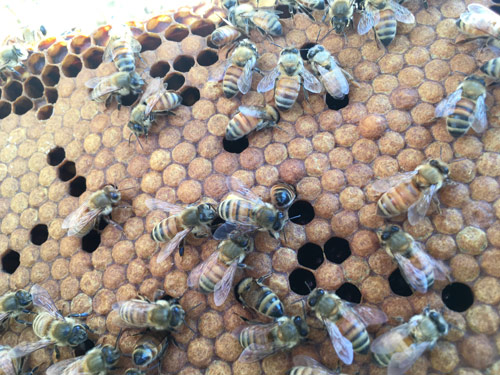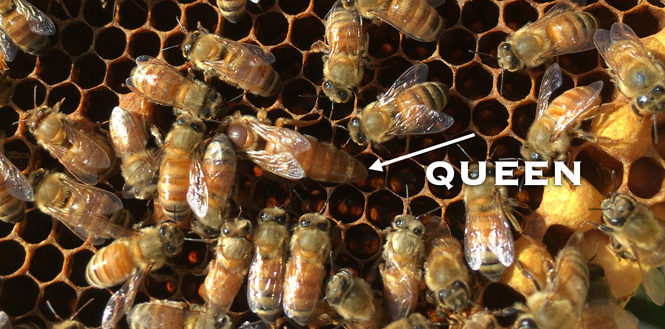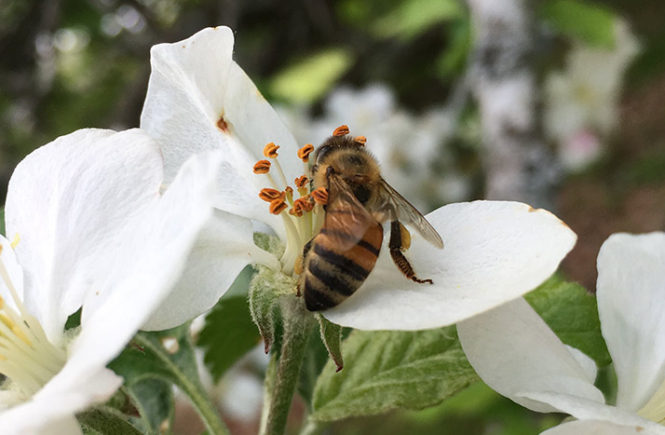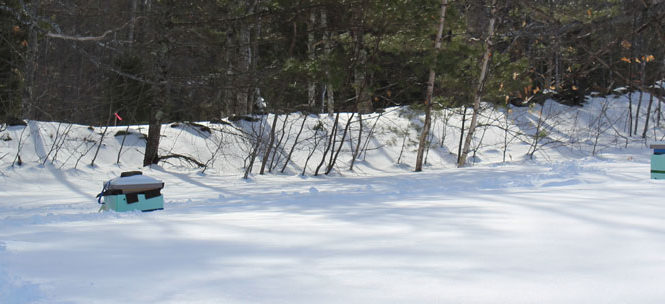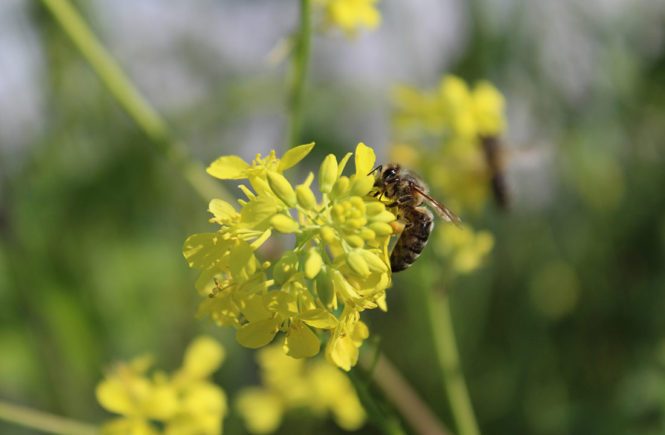If I had to sum up my major learning of beekeeping this year – it would be one word: QUEENS. The queen bee (and a few workers wanting to be queens) were the source of many ups and downs of the summer season.
STRUGGLING WINTER QUEEN
In my spring update, I wrote about my one surviving hive from winter limping along slowly. I tried to give the queen a long chance to gear back up, but she didn’t have it in her. I eventually had to remove her and replace her with a new purchased queen in order to restore the hive back to having a chance to thrive. The new queen quickly got up to speed laying eggs, and I also introduced a frame of brood from another hive, so when it hatched it would give the hive more nurse bees (a queen will only lay enough eggs as she feels her hive can tend to, so this extra step helped encourage her to lay even more).
Mid summer, the hive was thriving and big enough to move out of nuc boxes and into a production hive set up…. and little did I know.. just in time to help save another of my hives … hive P2.
LAYING WORKERS
Hive P2 was the second package I bought this spring, and was doing fine, until in a completely rookie move on my part I lifted a box off the hive not realizing a frame from the lower box was stuck to it until it crashed to the ground. It certainly pissed them off a bit, and a week later, checking back in, I saw emergency queen cells everywhere – confirming, that off all the frames in the hive to drop, I had managed to drop the one with their queen.
To make a long story short, I don’t know if the hive successfully raised a new one and she had some bad fat on a mating flight and never made it back to the hive or what… but after a few weeks of wondering what was going on in the hive, and why I kept seeing new cells, I saw an emergency cell with two eggs in it – a major indicator that worker bees have started to lay.
Laying workers happens when there’s no open brood in a hive for an extended period of time. This changes the pheromones in the hive, and workers ovaries may kick into action. Since they’ve never mated, these eggs only result in drone bees (another indicator of the problem). It’s tricky to fix. They won’t accept a new queen since they don’t think they’re queen-less, and there can be many laying workers, so you can’t identify and remove them.
The solution? Merge it with the hive that survived the winter.
To do this, I placed the brood boxes of P2 on top of the other hive boxes, separated by newspapers with some slits cut into it. The bees will chew through the paper over a couple days, but in the meantime, the pheromones from the open brood in the hive will waft up through the newspaper slits, causing the laying workers to stop, and the hive to accept the queen in the base hive.
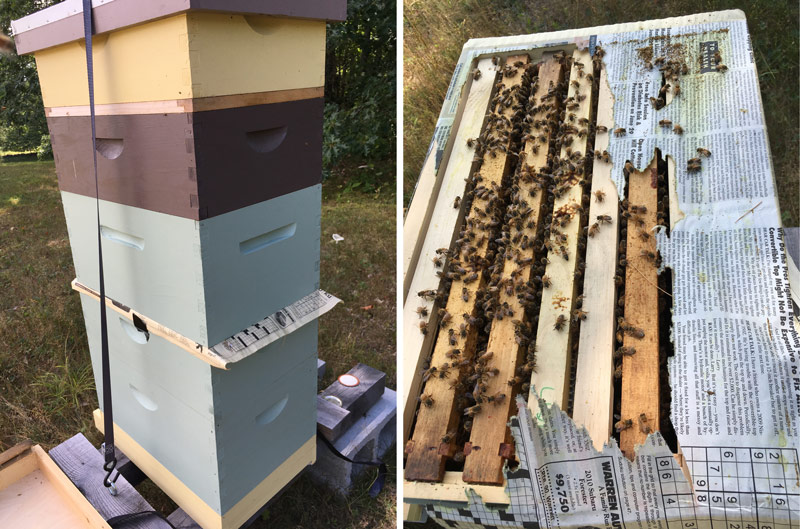
FAILING PACKAGE QUEENS
Chatting with other bee keepers in the area who had bought packages at the same time in the spring, there seemed to be a several having issues with the queens suddenly slowing down or laying in spotty patterns. Theory is, the bad weather in the south around the time that the packages were being prepared may have shortened the queens mating flights. Soon after, one of my packages started to show the same signs. I tried to replace the queen in this one, but they killed her and started to raise their own.
One of my packages was showing this same activity, so I removed their queen, and attempted to install a new queen. They did NOT appreciate this, killed her, and raised a new one on their own. This is totally fine and natural, but as you wait for her to hatch and mate, it causes a gap of a couple weeks where the colony could have been increasing in size.
LATE SUMMER SWARM
Two of my other hives were doing really well, and were very strong in late July, and for a couple inspections I was a bit of a slacker and only checked on the honey supers and the top brood box. This came back to bite me in late August, when I did a full hive inspection and in one found all sorts of swarm cells, and no sign of any queen. The hive had swarmed. Not much to do at that point but admit my mistake in monitoring, and move on.
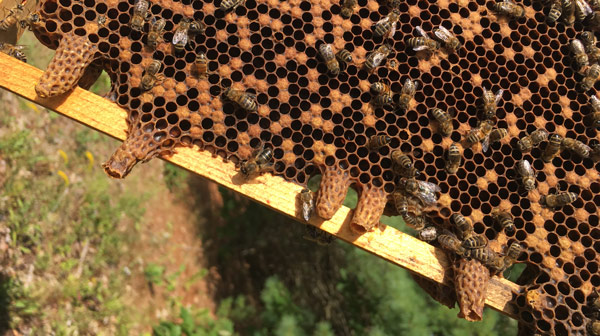
The other hive was performing equally as strong, but fortunately for me, when I inspected them they were just starting to make swarm cells, and the current queen was still present. We were able to take her out, with some frames of bees and brood and move her into a nuc, to start a new colony, and preventing the original hive from swarming.
By early September, both queens were mated, and successfully laying up a storm in their hives.
ONE QUEEN PLAYED NICE
The last of m hives, a package I had bought late in May, was the only hive that didn’t have any issues this year with queens. I didn’t have any hopes of getting honey out of this hive, since it was started to so late… and may have not given it as much of a watchful eye. But they surprised me, building up slowly but strongly all summer – and the queen never missed a beat.
